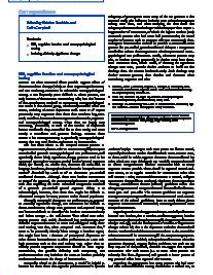Authors' reply
Dr Halvorsen quite rightly draws attention to the various definitions of clinically significant change, which all have their advantages and disadvantages. We especially agree with the comment that the threshold for clinically significant change should at least coincide with the threshold for reliable change (18.66 in our sample).
However, using the threshold of 10 points, as promoted by Schnurr,1 has specific value in our study. First, the 10-point threshold has been shown to be related to changes in quality of life in several samples.2,3 Second, clinically significant change refers to both clinical improvement and deterioration.
Geachte bezoeker,
De informatie die u nu opvraagt, kan door psychotraumanet niet aan u worden getoond. Dit kan verschillende redenen hebben,
waarvan (bescherming van het) auteursrecht de meeste voorkomende is. Wanneer het mogelijk is om u door te verwijzen naar de bron
van deze informatie, dan ziet u hier onder een link naar die plek.
Als er geen link staat, kunt u contact opnemen met de bibliotheek,
die u verder op weg kan helpen.
Met vriendelijke groet,
Het psychotraumanet-team.
In: The British journal of psychiatry, ISSN 0007 1250 | 209 | 1 | 85-86
http://bjp.rcpsych.org/content/209/1/85.2
Reply to Joar Øveraas Halvorsen


